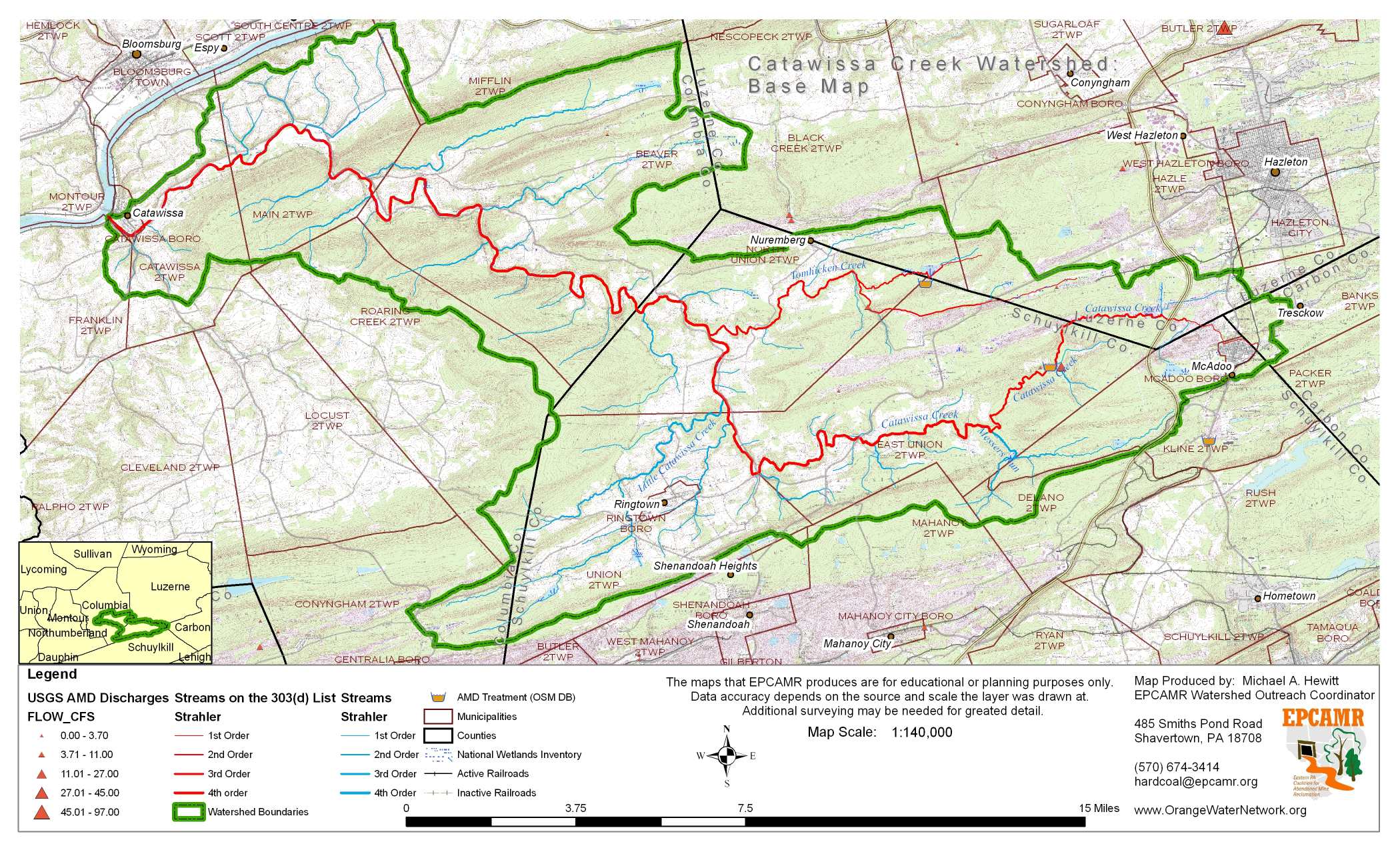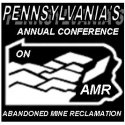
In 2001, the Catawissa Creek Restoration Association (CCRA) and EPCAMR completed the construction of the Oneida #1 Tunnel Discharge Treatment System in Eagle Rock Resort. The system consisted of 3 buried limestone beds (each bed was split into 2 halves separated by a headwall) and a settling pond. The 1,500 gallons per minute (gpm) discharge is collected by an under-drain intake system, diverted, and split into the 3 beds. The pH is raised by the limestone from about 4 to 7 and aluminum is collected in the settling pond. The resulting water is much cleaner and healthier for aquatic life. The system is completely drained at least monthly by Eagle Rock Resort maintenance crews.
In 2003, the EPA approved the Total Maximum Daily Load (TMDL) Catawissa Creek Watershed For Acid Mine Drainage Affected Segments. This document showed impaired segments of the watershed and placed pollution loadings on each source. It was determined that the Audenreid Tunnel Discharge accounted for 80% of the aluminum loading to the creek.
In 2004, the Catawissa Creek Restoration Association (CCRA) with the help of DEP 319 Program and EPCAMR have developed a Catawissa Creek Watershed Implementation Plan to address the Total Maximum Daily Load (TMDL) Report. This document explains the various pollution sources, what needs to be done to meet Pollutant Load Reductions required by the TMDL and the estimated cost to bring the Catawissa Creek back to its designated use.
In 2005, as a result of the implementation plan was the construction of a treatment system for the Audenreid Tunnel Discharge outside of Sheppton, PA. The system consists of 3 limestone-filled upflow style tanks and settling ponds and was originally designed to treat about 8,000 gpm. An under-drain intake system collects the polluted mine water from the discharge channel, diverts, and splits the flow to the 3 tanks. Shortly after installation, the system intake and piping were plugged by sediment coming from the tunnel in the aftermath of a tropical storm. Later, a bypass intake system and micro hydro turbines were installed on the outflow of the tanks to generate electricity on approximately 10,000 gpm of water to help flush the tanks on a regular basis to limit aluminum sludge buildup in the tanks. Unfortunately, the system developed cracks in the piping and preferential flow paths in the limestone which reduced the effectiveness of treatment over time.
In 2008, the Pennsylvania Environmental Council spearheaded a Rivers Conservation Plan for the Catawissa Creek Watershed with the help of EPCAMR, CCRA, and PA DCNR. The planning documents: Questionnaire, Fact Sheet, and Watershed Map are also available. The plan was completed in 2010.
In 2009, the 3rd treatment system was constructed to treat the Oneida #3 Tunnel Discharge outside of Eagle Rock Resort. The system was fashioned after the Audenreid Treatment System, but only has 1 limestone tank (with plans to build a second) and treats about 3,000 gpm of mine water.
In 2020, a Qualified Hydrologic Unit Plan was created for the Catawissa Creek which serves to determine that the watershed qualifies for reclamation funding from the Surface Mining Control and Reclamation Act. The QHUP pulls together water quality data, evidence of local support for restoration, restoration goals, and a cost/benefit analysis to be ~1.9:1.0 in favor of restoration. As a result, the state placed the Audenreind Tunnel on a list of AMD discharges to be evaluated for active treatment and the land where the current passive treatment sits was obtained by PA DCNR.
In 2022, an effort was started to create public access points along the creek for fishing and boating. As stated in many planning documents, the goal of the CCRA is to restore the “Catty” to a trout fishery once again. Lots of progress has been made already.
If you would like to become involved in this watershed, please contact:
Columbia County Conservation District c/o Watershed Specialist 702 Sawmill Road, Suite 204 Bloomsburg, PA 17815 (570) 784 -1310 x 102You may want to consider being a part of the Catawissa Creek Restoration Association.
This group is currently working on getting an informational website.











